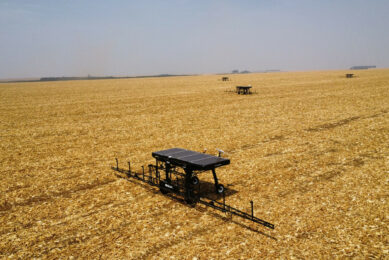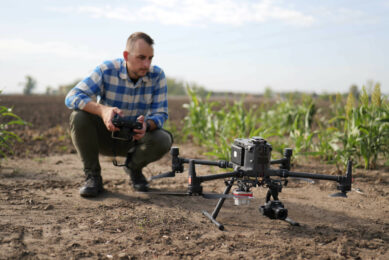Pain points of nitrogen applications: How drone data helps

Determining where and how much fertiliser to apply is critical throughout the early part of the growing season. In 2021 and beyond, drone technology will have a notable impact here.
From soil quality to rainfall to temperature, farmers face a multitude of challenges when tending their crops. With weather, light and water impacting land differently each day, a single field can possess countless pain points and yield varying results.
More granular data esential
It’s no surprise then that farmers have started looking for ways to assess not only overall land health but specific areas of their crops. More granular data has become essential to making smarter planting decisions.
Efficient input allocation is one key issue that can significantly benefit from specific field data. Determining where and how much fertiliser to apply is critical throughout the early part of the growing season.
Increase in machine learning usage
In 2021 and beyond, I see drone technology having a notable impact here. While the agriculture industry has been using drones and drone data for a long time now to help make decisions, I believe we will see an increase in machine learning usage to accelerate understanding of this visual data in the coming year. This will save farmers both time and money, and create a faster, more sustainable planting process.
Identifying variability with aerial insights
In order to make effective input decisions, farmers need to leverage a large number of information sources, including soil and tissue samples, topographical data, and seed type and densities.
Aerial data can simplify a lot of this decision-making by identifying crop health variability that might not have been visible from the ground. Drone data can also help farmers segment field data so each plant is given the right kind and amount of nutrients.
Drones equipped to apply fertiliser can also utilise the variable rate nitrogen prescription as generated by the aerial data
After ground-truthing, if the variability appears due to nitrogen deficiencies, aerial data can help segment the field into management zones. Farmers can then prescribe nitrogen to specific areas rather than applying a fixed amount across the whole field. Drones equipped to apply fertiliser can also utilise the variable rate nitrogen prescription as generated by the aerial data.
Soil & tissue sampling simplified
Additionally, drone accuracy saves farmers hours of manual labor when it comes to soil or tissue sampling for fertiliser applications. For example, a DroneDeploy Live Map can quickly show a farmer where there are problematic areas within a field so that they can take soil samples of specific sections that are deficient rather than uniform sampling over the entire field. This provides a more targeted and deliberate approach to sampling, allowing farmers to spend more time tending to other areas of the farm.
What’s next
Drones and the data they collect are critical to efficiently understanding and managing field variability and fertilisation needs. Their ability to pinpoint potential deficiencies, generate variable rate prescriptions, and aid in the fertiliser application process will boost agricultural production and lessen wasted time and resources.
The relationship between hardware and software should skew toward enhanced IoT capabilities and automation practices
However, gaps remain in the full connectedness of hardware and software. To fully harness these technologies’ capabilities and achieve the benchmarking status they deserve, the relationship between hardware and software should skew toward enhanced IoT capabilities and automation practices. Drone software analyses the variability of one’s fields and, from there, feeds a prescription recommendation into autonomous sprayers – this connection needs to be more seamless and expedited.
We look forward to continued developments in this space, as addressing these issues will alleviate significant pain points for progressive farmers.
Join 17,000+ subscribers
Subscribe to our newsletter to stay updated about all the need-to-know content in the agricultural sector, two times a week.



